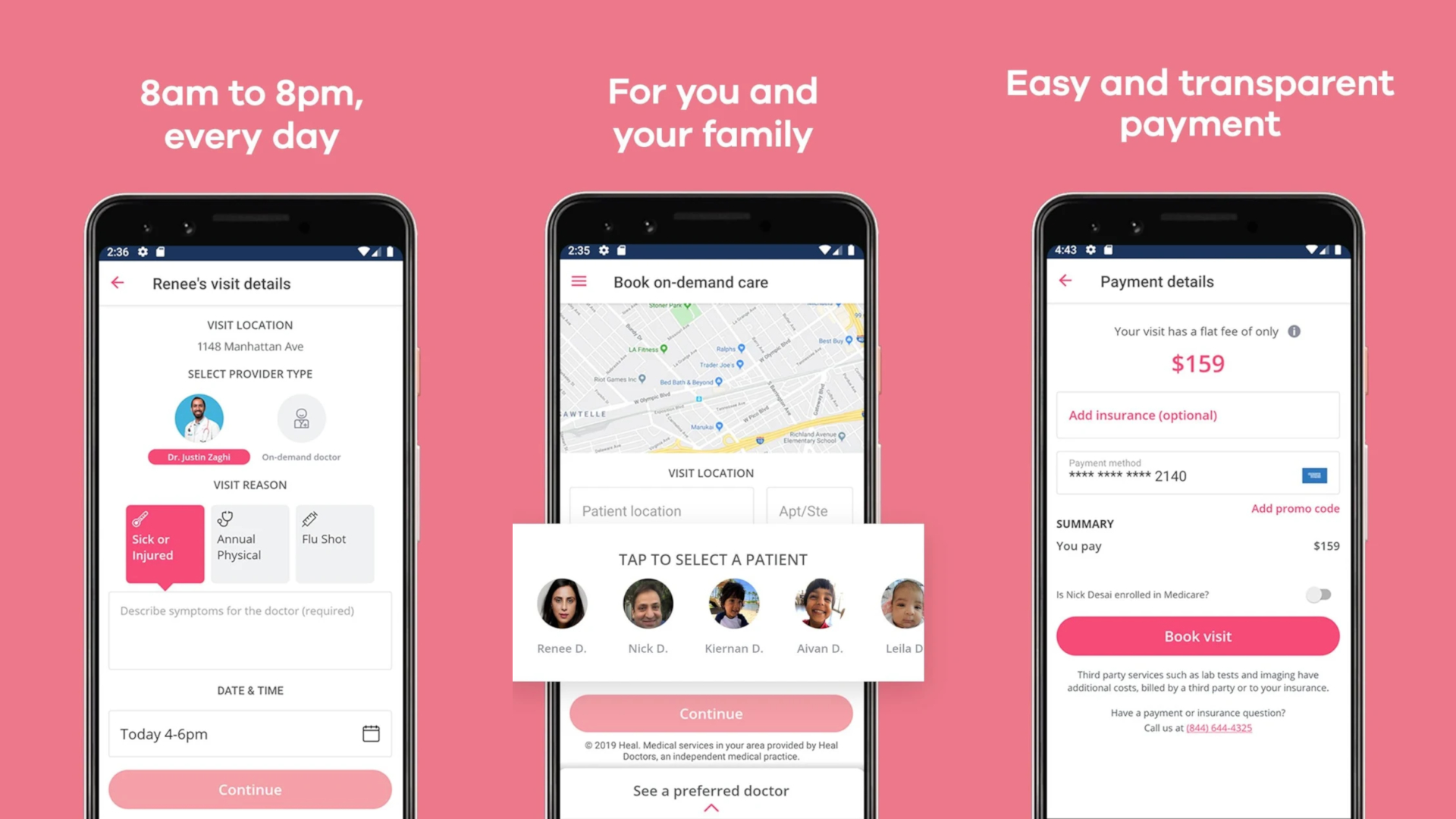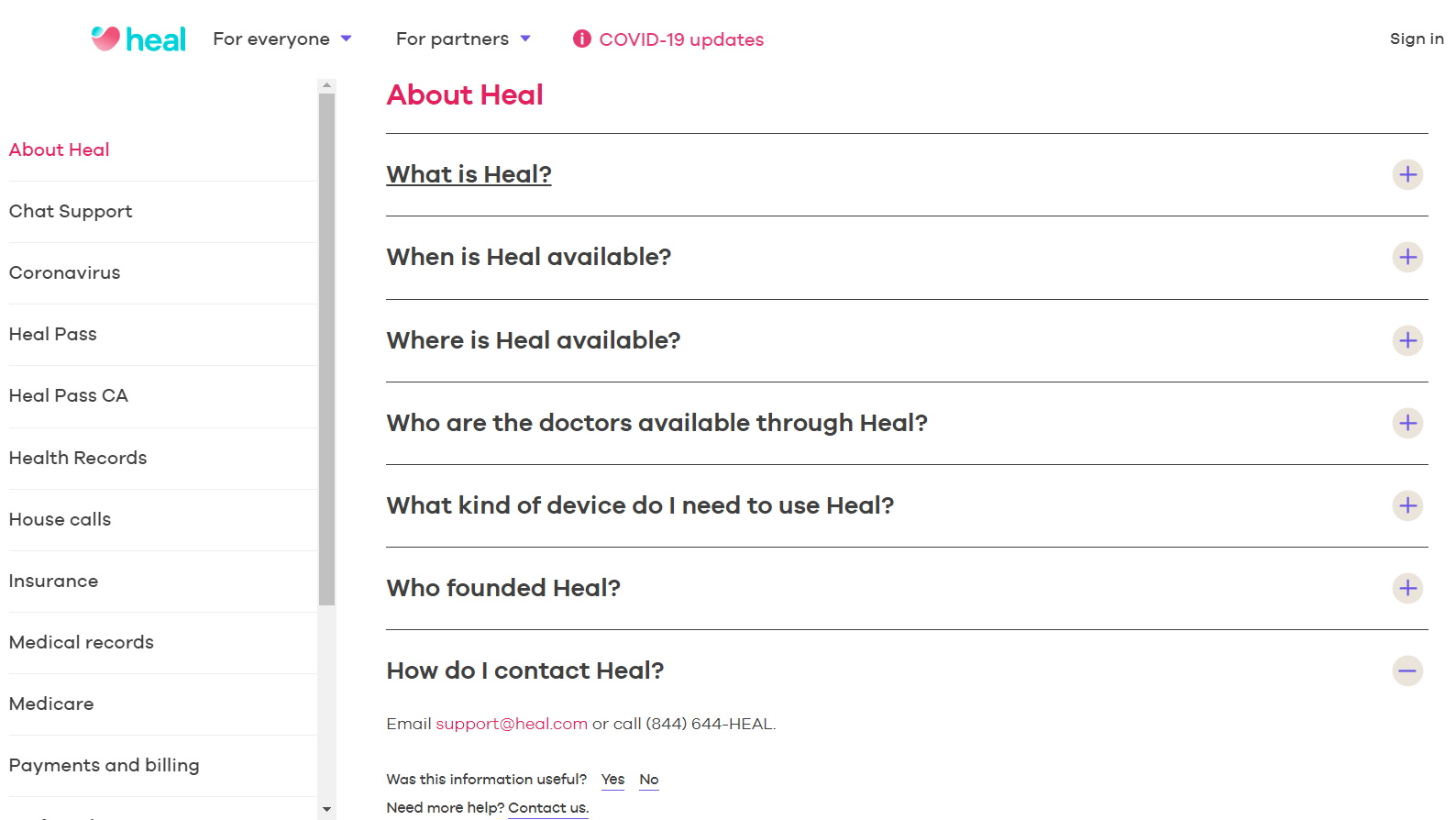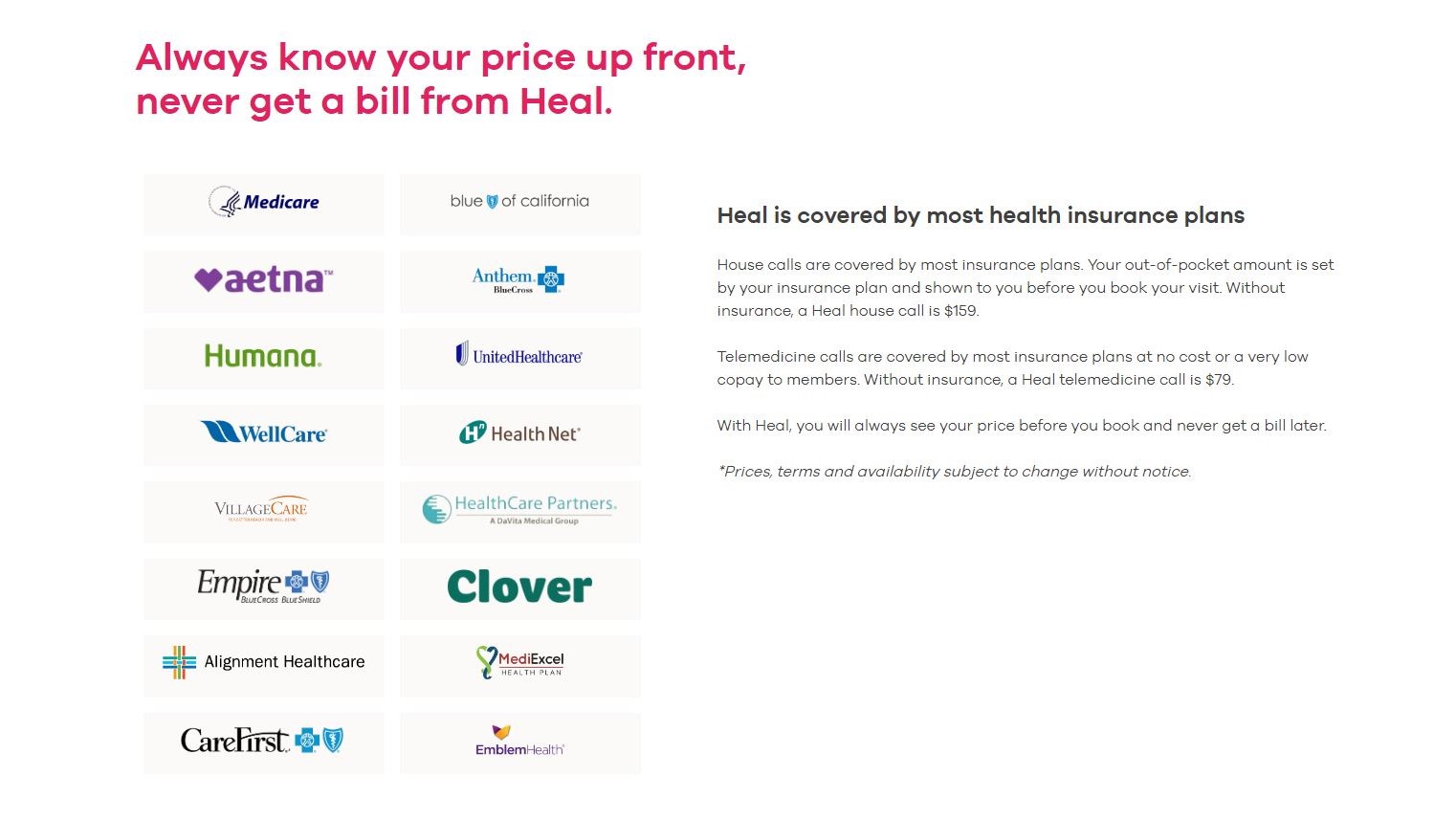TechRadar Verdict
Heal is certainly worth a look for those that have the service available in its limited geographic area.
Pros
- +
Upfront pricing
- +
Works with many insurance providers
- +
Available mobile apps
- +
Choice of support methods
Cons
- -
Limited geographic area
- -
Visit bills out when scheduled
- -
Short support hours
Why you can trust TechRadar
Born out of both frustration and necessity after waiting 7 hours in an emergency room with a sick child, Heal was started by Dr Renee Dua, who is both a doctor and a mother. She and her team have several guiding principles, including to keep the prices affordable, and to accept insurance. This company focuses on ‘Virtual house calls,’ and indicates that it has completed 150k worth of them, with over $78 (£62) million of savings to its members.

Features
Visits are available from Heal Doctors 365 days a year, from the hours of 8AM to 8PM. These encounters are scheduled for the same day, or appointments can be made in advance. Users simply choose a two hour window of when they wish to discuss their issue with the doctor, and the appointment gets scheduled.
Heal supports both the Android and the iOS platforms offering mobile apps for each.
The patient encounters that Heal handles fit into a couple of categories: Coronavirus, Pediatrics, Urgent Care, Primary Care and Preventive Care. The doctors on the Heal panel are trained in either Pediatrics, or Family Medicine, and are fully licensed to practice in the areas that they serve. The doctors are not credentialed for inpatient medical care at any hospitals, and are not able to provide care if the patient has such needs.
Care can be provided, such as child wellness visits, that correspond to the intervals as recommended by the American Academy of Pediatrics. Via wellness visits, the entire vaccination needs of the child can be provided for, and even non-routine vaccines are available such as cholera, rabies and typhoid.
Sick child visits are also available. Heal’s physicians treat a full variety of common childhood complaints that includes Strep throat, sinus infection, lice and rashes. There are also annual physicals available, that can be used for school, camp and sports. Each physical covers the complete medical history, guidance for necessary immunizations, and a full physical exam that encompasses all body systems.
A downside of telehealth visits is that often the patient sees a different provider each time, kind of like when they return to the Emergency Department, and see whichever provider randomly is on duty for the day. With Heal, the company has anticipated this issue, the patient can actually designate a physician if they have a good experience with them, and then this becomes their ‘Preferred Doctor,’ so there is some continuity of care. Furthermore, you can even designate different Preferred Doctors for each family member, so everyone in the family can get a provider of their choice.
Drawbacks
The Heal app gets favorable reviews, with a score of 4.4 overall on the Google Play store. However, some downsides do get identified.
One is that during COVID, as of late March, a house call cannot be booked for the initial visit, and rather the first contact is required to be over telemedicine. In a way that makes sense for the protection of patients and providers, however it is unfortunate in a situation where a patient truly believes that their symptom can only be assessed by an in person physician and there is no mechanism to short circuit this process.
There are also daily limited geographic areas where the Heal service is provided. This includes only specific areas throughout California, the Greater Atlanta area of Georgia, New York in Manhattan, Queens and Brooklyn, the Washington DC area, and parts of Washington State. There are plans to expand to New Jersey next.
A final criticism is that when paying outside of insurance, the patient’s credit card is billed as soon as the visit is scheduled, and cannot be canceled subsequently.

Support
Heal offers a variety of support methods. The first is a toll free phone number, which incorporates the company’s name, (844) 644-HEAL, to be cute, and easy to remember. There is also a dedicated email address, but just a reminder that this method is not HIPAA compliant. Finally, there is Chat support, which allows an instant message style of conversation with what Heal dubs their ‘Patient Success team.’ It can be accessed via a web browser, as well as the mobile apps, and it even offers support in both English and Spanish. Heal indicates that patients will often receive a faster response when using Chat support, and can also upload images and documents as needed.
Support is available every day, from 8AM to 8PM. After hours, a message can be left, and the support team will be in touch the next day.
There is an extensive FAQ that actually does answer a lot of questions, but there are no options for webinars, eBooks, or an online support forum.
Pricing
Heal endeavors to be upfront in its pricing for its services. Towards that end, its website indicates that a Heal House Call has a cost of $159 (£127), and a Heal telemedicine call comes in at $79 (£63).

In addition, Heal participates with a variety of major insurers. These include Aetna, Humana, Empire and Emblem Health, along with Medicare and Medicare PPO plans. Also, to reduce the surprise factor, patients will always see the price for the service before the booking, and not just get a bill afterwards. The website indicates that a Heal telemedicine call is “currently $0 co-pay with most insurances or Medicare,” which is an excellent deal.
Final verdict
Heal offers house calls- both virtual and actual- via its panel of trained physicians. The pros encompass the ease of scheduling, the mobile apps, and the availability of vaccinations that most pure telehealth providers do not provide. The downsides include the limited hours for support, the few geographic areas served, and the practice of billing prior to the visit.
- We've also highlighted the best telemedicine software
Jonas P. DeMuro is a freelance reviewer covering wireless networking hardware.
